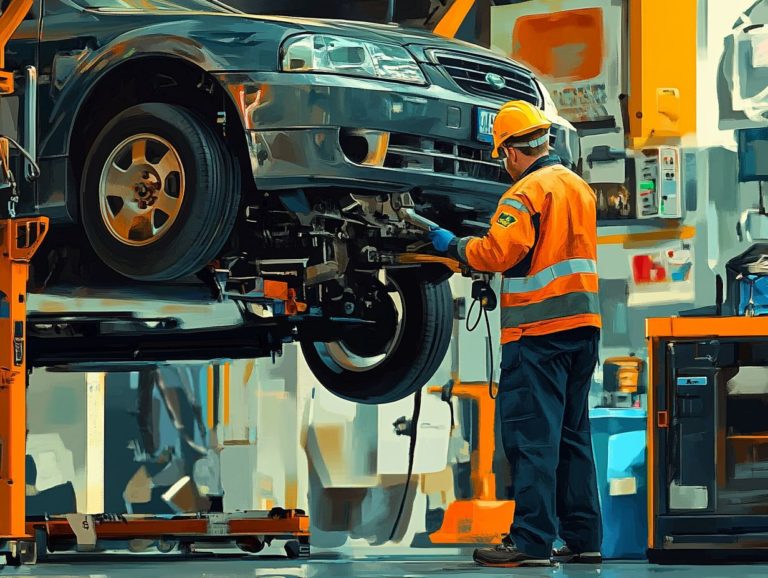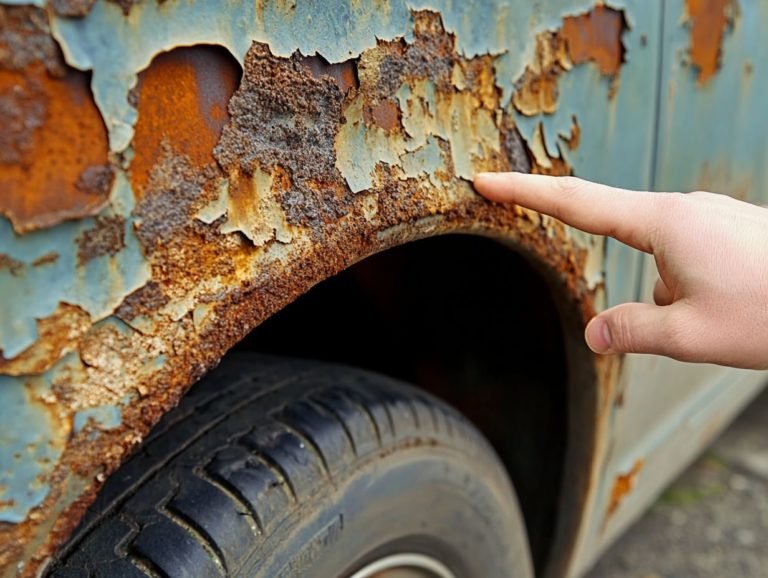How Do You Know If Your Tires Need Replacing?
Tires are the unsung heroes of your vehicle, playing a vital role in both safety and performance on the road.
Understanding tire wear is essential for you as a driver; it not only enhances your vehicle s longevity but also safeguards your well-being.
This article delves into the factors that contribute to tire wear, the signs that indicate it s time for a replacement, and how to select the right tires for your car.
You ll also discover valuable tips on maintaining your tires for a longer lifespan. Stay informed, and keep your ride smooth and safe!
Contents
Key Takeaways:
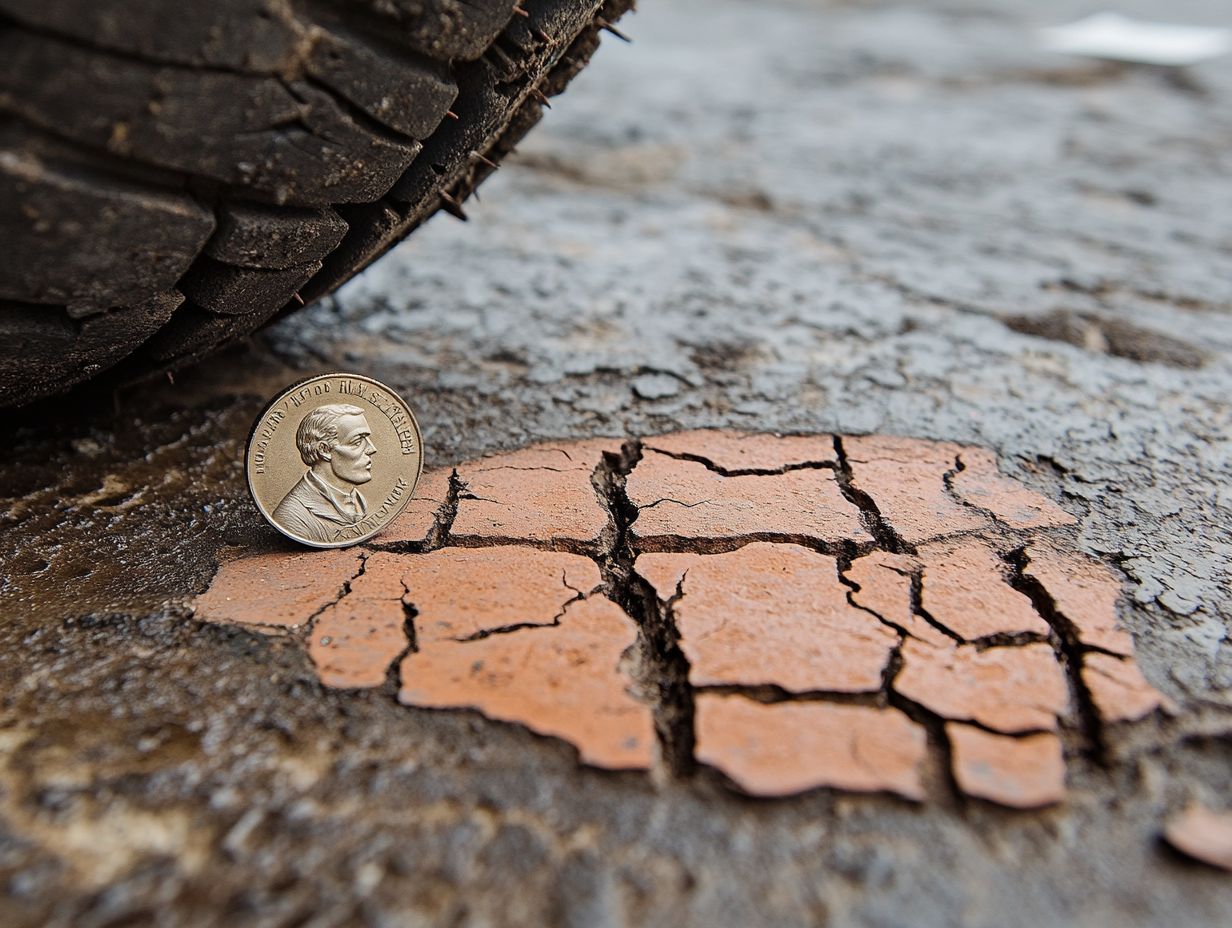
- Regularly inspect tires for signs of wear and tear to ensure safety and prevent accidents.
- Look out for visual indicators such as tread depth and uneven wear, as well as changes in performance, to determine if tires need replacing.
- Follow general guidelines for replacement and consider factors like driving habits and weather conditions for a more accurate timeline.
Understanding Tire Wear
Understanding tire wear is essential for maintaining both the safety and performance of your vehicle. Tires are fundamental to ensuring a smooth ride, effective braking, and optimal fuel efficiency.
Your driving habits, road conditions, and how you care for your tires all play significant roles in how quickly they degrade.
Regular inspections can help you spot issues like uneven wear or tread damage before they escalate into costly replacements.
In the Phoenix area, experts like Howard Fleischmann at Community Tire Pros stress the importance of proactive tire care, helping you extend the lifespan of your tires and elevate your driving experience.
Factors that Contribute to Tire Wear
Several factors contribute to tire wear, significantly impacting the lifespan and performance of your tires.
It s essential to understand how different driving styles like aggressive acceleration or hard braking can accelerate tire wear.
Regular maintenance, like checking inflation and wheel alignment, helps prevent uneven wear patterns. For example, if your tires are consistently under-inflated, they may wear out more quickly on the edges, whereas over-inflation can cause excessive center wear.
External conditions, such as fluctuating temperatures and varying road surfaces, can further exacerbate tread depth limitations. Stay alert and tackle any tire issues fast to keep your ride safe and smooth!
Signs that Your Tires Need Replacing
Recognizing the signs your tires need immediate attention is vital for maintaining your vehicle’s safety and performance on the road.
You should look out for common indicators such as visible tread wear, bulges on the sidewalls, or a noticeable decline in your vehicle’s handling and comfort.
Regular tire inspections are key in spotting these issues early, allowing you to replace tires on time and prevent further damage. In vibrant communities like Phoenix, you can rely on experts at Community Tire Pros for comprehensive tire evaluations, ensuring your automotive needs are addressed with the utmost precision and care.
Visual Indicators of Wear and Tear

Visual indicators of tire wear are essential for determining when it’s time for you to replace your tires.
Keep an eye out for uneven tread wear patterns, which can appear as bald spots or noticeable differences across the tire surface.
Cracking or bulging on the sidewalls might signal structural damage, while discoloration could be a sign of rubber degradation.
To perform a simple inspection, regularly examine each tire for these visual cues, ensuring that you maintain the correct pressure to prevent premature wear.
Emphasizing a routine check not only extends the life of your tires but also minimizes the risk of blowouts, making professional evaluations vital for your long-term safety.
Performance Changes to Watch Out For
Performance changes in your vehicle can indicate it’s time to consider a tire replacement. This directly affects both safety and your overall driving experience.
As tires wear down, you may encounter various performance-related issues, such as diminished grip on wet or slippery surfaces. This loss of grip can put you at risk don’t let it happen! It can significantly compromise your control and stability on the road.
You might also notice an increased stopping distance, making it more challenging to react swiftly in emergency situations. Furthermore, compromised handling can detract from your enjoyment and safety, especially when navigating corners or dealing with tricky road conditions.
To reduce these risks, schedule your tire inspection today to ensure your safety! It s essential to regularly check your tire pressure, as maintaining optimal inflation levels is crucial for tire safety and performance.
By understanding these factors, you can ensure that your vehicle remains in peak condition, ready for any journey.
How Often Should You Replace Your Tires?
Determining how often you should replace your tires is crucial for maintaining optimal safety and performance on the road. While most manufacturers suggest replacing tires every six years, this timeline can vary based on factors like tread depth the depth of the grooves in your tires that help with grip and your specific driving conditions.
Regular inspections are vital to evaluate tire health. This ensures that any wear and tear doesn t slip under your radar. Understanding the driving conditions in your area, such as in Phoenix, can significantly impact your replacement schedule. Consulting local experts for tire care is essential.
General Guidelines for Replacement
General guidelines for tire replacement serve as a vital framework to ensure your vehicle remains both safe and efficient.
By understanding when to replace your tires, you can significantly enhance your safety, optimize performance, and extend the lifespan of your vehicle. Key indicators to watch for include examining tread depth, which should ideally measure at least 2/32 of an inch.
Regular visual inspections can also unveil signs of wear, such as cracks or bulges, signaling the need for timely replacement. Additionally, signs it’s time for a tire change include age; tires older than six years often require replacement, no matter how the tread appears.
Adhering to these guidelines will help your vehicle perform reliably, giving you the power to navigate various road conditions with confidence.
How to Choose the Right Tires for Your Vehicle
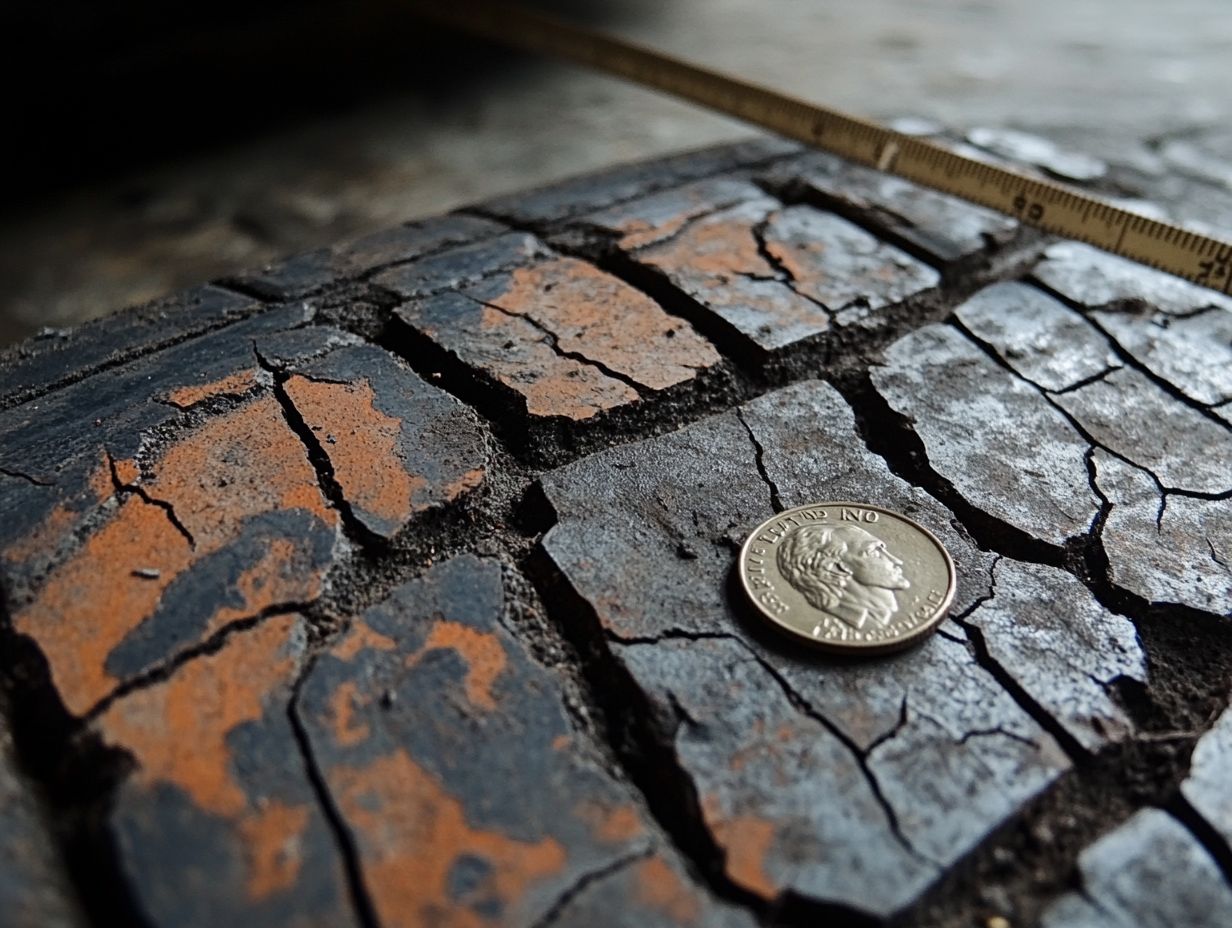
Selecting the perfect tires for your vehicle is an essential choice that directly influences both safety and performance. It optimizes handling and efficiency during your journeys.
You ll want to consider the nature of your driving whether you re gliding along highways or embarking on off-road escapades alongside important tire specifications like load capacity, tread pattern, and rubber composition.
The automotive specialists at Community Tire Pros in Phoenix are equipped to help you navigate the vast array of options available today. They ensure you find tires that are truly tailored to your unique driving needs.
Factors to Consider When Buying New Tires
When you’re in the market for new tires, there are several key factors to consider to ensure you select the perfect fit for both safety and performance.
Evaluating the tread design is crucial as it directly influences traction and handling across various surfaces from slick, wet roads to rugged off-road terrain. Durability is another significant aspect; reputable brands often offer warranties that showcase their confidence in their products.
Some tires can even endure up to 70,000 miles under typical driving conditions. Brand reputation can serve as your compass, steering you toward tires that have undergone rigorous testing and earned high marks from fellow drivers.
Additionally, metrics like tread wear ratings and performance statistics from tire manufacturers can give you the power to make an informed decision, ensuring that your chosen tires provide the reliability and peace of mind you crave on the road.
Maintaining Your Tires for Longevity
Proper maintenance is vital for extending the longevity of your tires, ensuring safety, and maximizing performance on the road. Regular tire care means keeping an eye on tire pressure, conducting regular checks, and adhering to proper alignment and rotation schedules.
If you’re in Phoenix, tire maintenance is crucial. Make it a key part of your car care routine.
Tips for Extending the Lifespan of Your Tires
Extending the lifespan of your tires demands a proactive approach and meticulous attention to detail.
Checking your tire pressure regularly is crucial. It can prevent uneven wear and boost your fuel efficiency. For instance, monitoring the pressure at least once a month helps maintain optimal performance.
Proper alignment improves handling and prolongs tire life. A simple visual inspection can reveal signs of misalignment, which can be easily corrected at most auto shops.
Get professional inspections every six months to spot issues like tread wear the wearing down of the tire surface that grips the road or damage that might otherwise go unnoticed. By incorporating these straightforward practices, you can act now to boost your safety on the road while maximizing the longevity of your tires.
Frequently Asked Questions
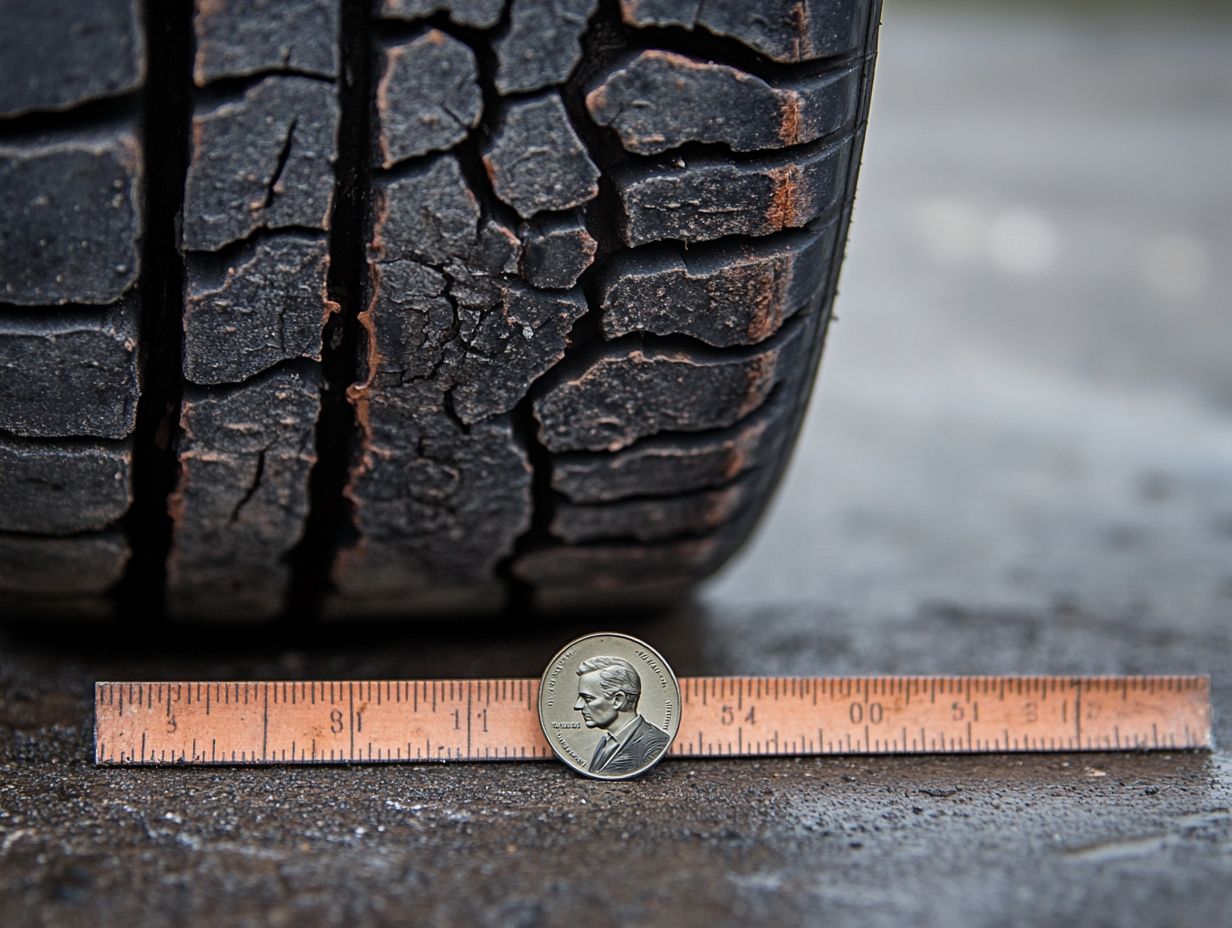
How Do You Know If Your Tires Need Replacing?
If your tires have reached the minimum tread depth of 2/32 of an inch, show signs of wear and tear, or have been in use for over six years, it may be time to replace your tires. Don’t forget to check your tire pressure regularly and look for any bulges or cracks in the rubber.
How often should I check my tires for wear and tear?
It’s recommended to check your tires for wear and tear at least once a month, or before any long road trips. This will help ensure your tires are safe and functioning properly.
Is there an easy way to check the tread depth of my tires?
Yes, there are a few simple ways to check the tread depth of your tires. You can use a tread depth gauge, a penny, or even a quarter. Simply insert the object into the grooves of your tire, and if you can see the top of Lincoln’s head (for a penny) or the top of Washington’s head (for a quarter), then it’s time to replace your tires.
Can I just replace one tire at a time?
It’s recommended to replace all four tires at once, even if only one or two are showing signs of wear. This helps maintain the balance and stability of your vehicle, ensuring all tires have the same tread depth for optimal performance.
How long do tires typically last?
The lifespan of tires can vary depending on factors such as driving habits, road conditions, and tire maintenance. On average, tires can last anywhere from 25,000 to 50,000 miles or up to six years.
What are the consequences of driving on worn-out tires?
Driving on worn-out tires can greatly increase the risk of accidents, especially in wet or slippery conditions. It can also negatively affect the handling and performance of your vehicle, as well as decrease fuel efficiency. It’s important to regularly check and replace tires to ensure your safety on the road.
Take action today! Regular tire maintenance can save you money and keep you safe.

